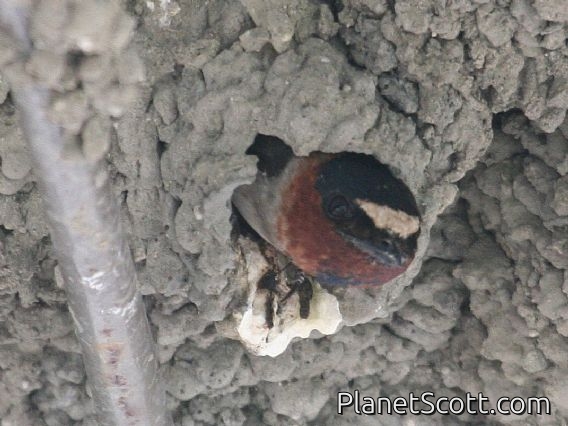Cliff Swallow (Petrochelidon pyrrhonota)

Cliff Swallow (Hirundo pyrrhonota)
×


Cliff Swallow (Hirundo pyrrhonota)
About Cliff Swallow (Petrochelidon pyrrhonota)
- Kingdom: Animals
- Phylum: Chordates
- Class: Birds
- Order: Perching Birds
- Family: Swallows
The cliff swallow or American cliff swallow is a member of the passerine bird family Hirundinidae, the swallows and martins. The generic name Petrochelidon is derived from the Ancient Greek petros meaning "stone" and khelidon (χελιδών) "swallow", and the specific name pyrrhonota comes from purrhos meaning "flame-coloured" and -notos "-backed".
Source: Wikipedia
Trips
Visits
-
2001-12-28
Puerto Vallarta, Mexico -
2006-04-16
Kern National Wildlife Refuge, United States of America -
2006-08-08
Canyonlands National Park, United States of AmericaA few seen on the river, and many nests in the cliffs. -
2007-04-10
Ejido Lagoon, United States of America -
2007-04-24
Lake Merced , United States of America -
2009-03-09
Cana Station, Panama -
2009-06-01
Redwood Valley, United States of America -
2010-02-21
Taxco, Mexico -
2012-07-09
Sax-Zim Bog, United States of America -
2012-07-10
Arrowwood NWR, United States of America -
2012-07-11
Theodore Roosevelt National Park - South Unit, United States of America -
2012-07-12
Yellowstone National Park, United States of America -
2013-04-14
Austin, United States of America -
2013-04-17
Matagorda County Birding Nature Center, United States of America -
2013-08-31
Mountain Lake, United States of America -
2014-04-05
Cosumnes River Preserve, United States of America -
2014-07-12
Windy Hill OSP, United States of America -
2014-07-18
Nome-Kougarok Road, United States of America -
2014-07-19
Nome-Teller Hwy, United States of America -
2014-08-23
MacKerricher SP, United States of America -
-
-
-
-
-
-
-
-
-
-
-
-
-


